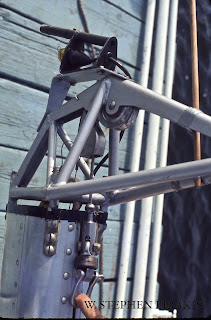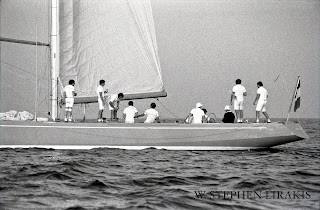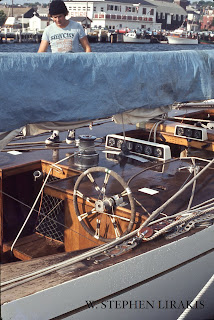1970 was the first time there were multiple challengers, Baron Bic paved the way for what would become the norm in America’s Cup racing; a challenger elimination series. He also introduced the America’s Cup to the French, and trained a crew many of whom would go on to long careers in the America’s Cup. Bic, who had been enormously successful in business, considered that there would be no reason he could not apply the same principles that brought him success in business would equally apply in sailing. It would prove to be his achilles heel.
The Australians returned with the new thinking of Alan Payne, a soft spoken, polite and kind man, who in my estimation was never fully appreciated for his abilities. “Gretel II” was likely the fastest boat in 1970, additionally full of progressive ideas. “Gretel II” probably suffered from the same steering difficulties as did “Interpid”; note the small rudder behind increasing bustle.
Sailmaking and the crew training were the critical differences between the Americans and the rest of the world still. We had an intense elimination series, which really sharpened everyone’s skills and pointed out weaknesses, which in cases could be corrected. ( Constellation in 1964 is a prime example)
This proved to be the closest America’s Cup yet and probably gave a small fright to the America’s Cup selection committee.



.jpg)
